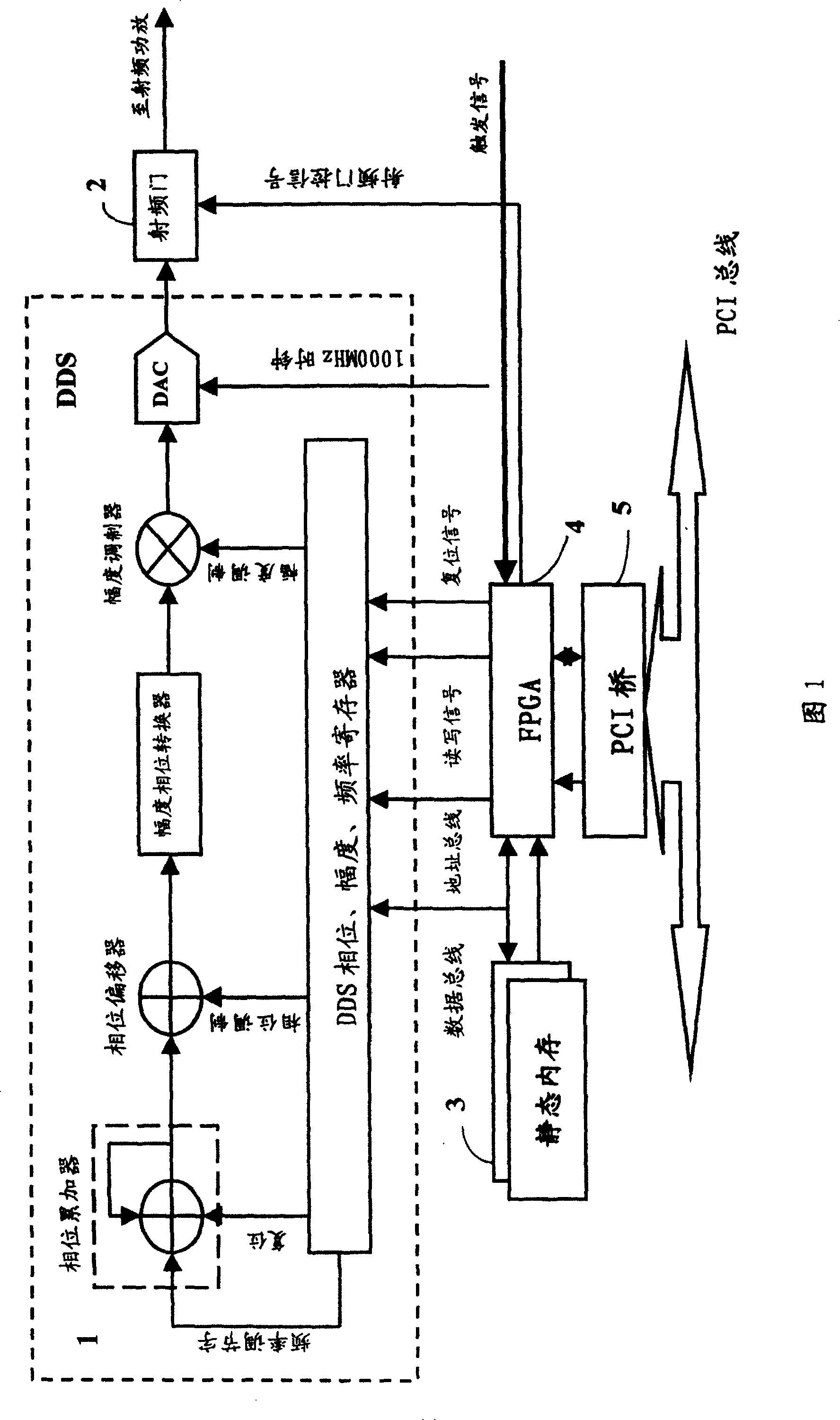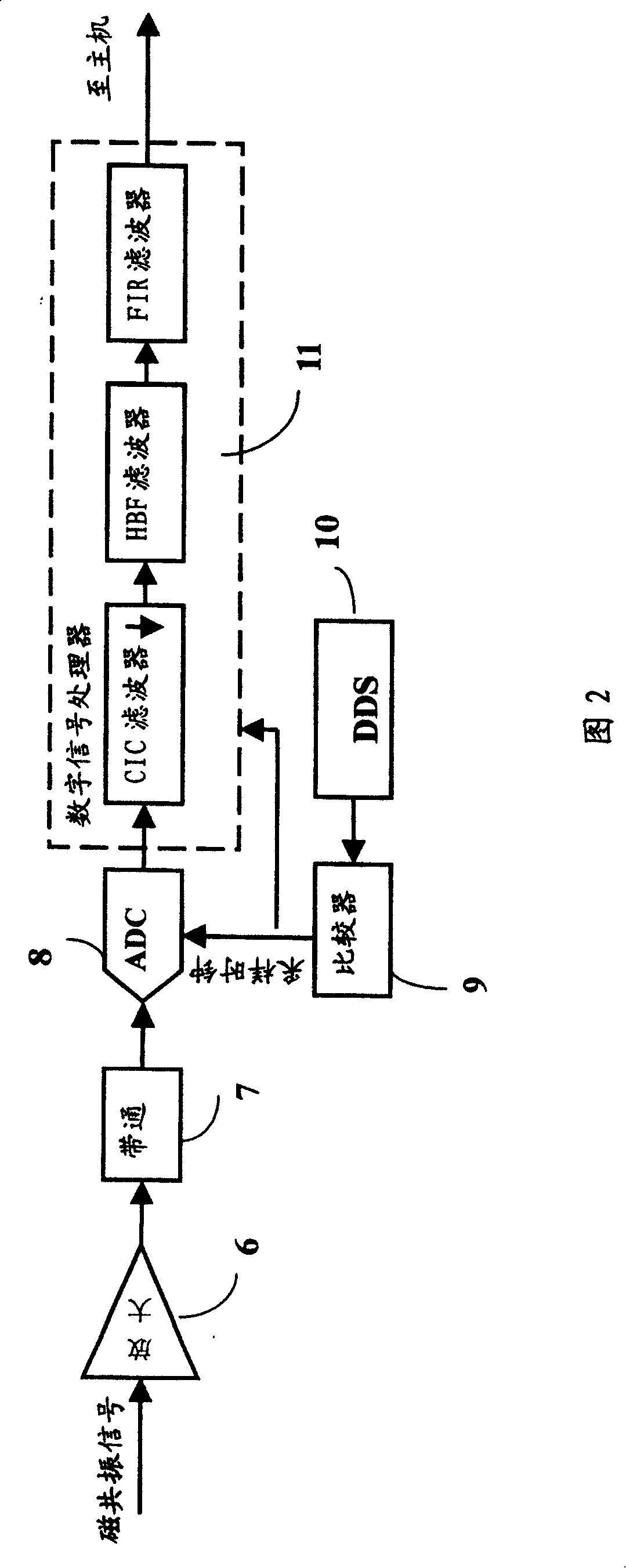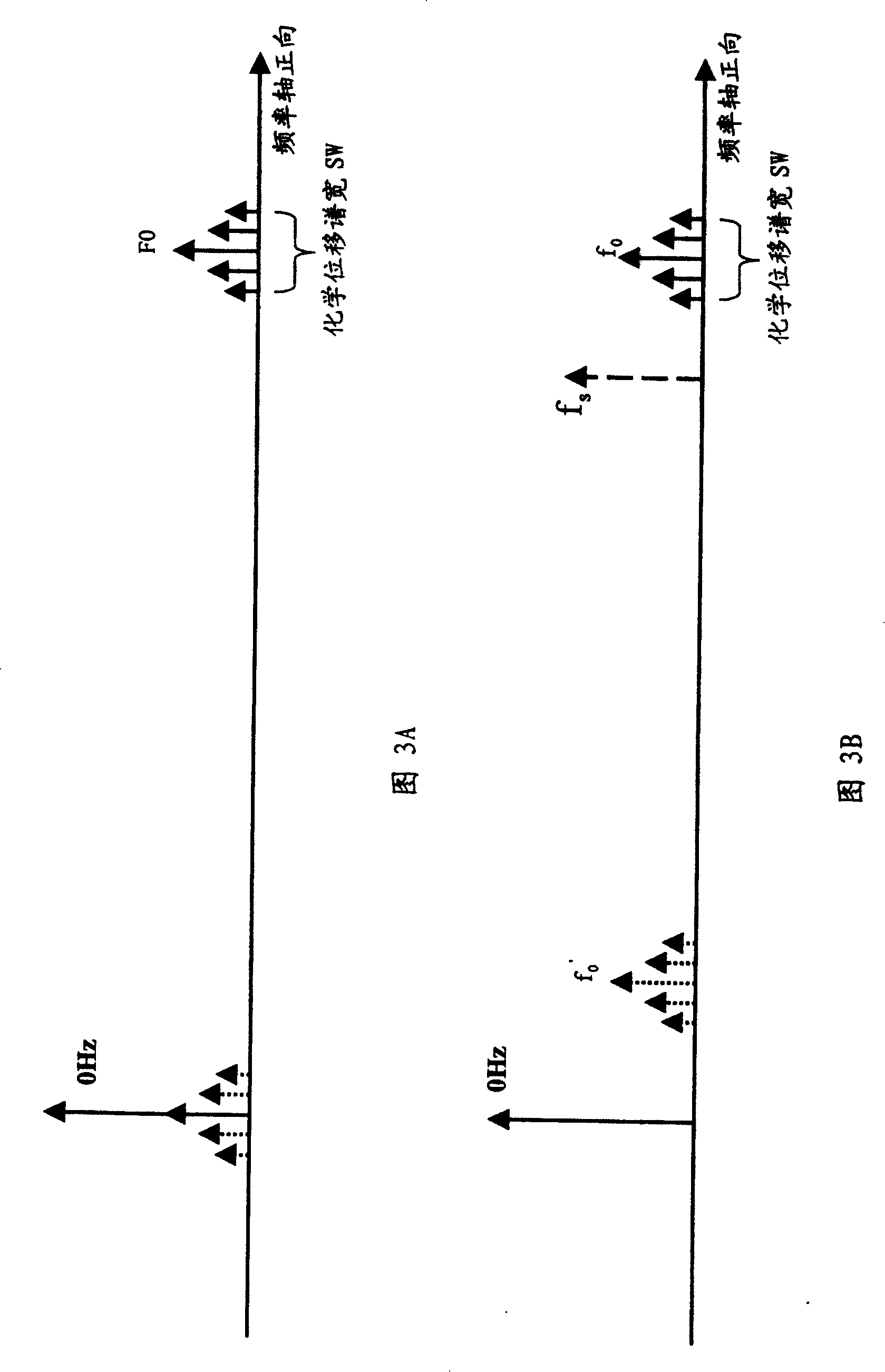Digital nuclear magnetic resonance signal source
A technology of frequency generation and nuclear magnetic resonance, which is applied in the direction of using nuclear magnetic resonance spectrum for measurement, magnetic resonance measurement, and magnetic variable measurement, etc., can solve the problem that the scale of ROM table cannot be made large enough, frequency adjustment cannot be realized, cost and design Issues such as increased complexity and power consumption
- Summary
- Abstract
- Description
- Claims
- Application Information
AI Technical Summary
Problems solved by technology
Method used
Image
Examples
Embodiment Construction
[0075] Set a given sample NMR center frequency f 0 =100.1MHz
[0076] Chemical shift spectral width SW = 200KHz
[0077] When actually receiving nuclear magnetic resonance signals, the spectral width of the receiver is generally larger than the range of the spectral width required for observation. Here we can set the bandwidth of the receiver as SW=200KHz. According to the indicators that the performance of commercial ADCs can achieve at present, take N=1, then the ADC sampling frequency
[0078] f s = 100.1 MHz - 200 KHz / 2 N = 100 MHz
[0079] and f s Satisfy formula [1]
[0080] Therefore, the frequency of the nuclear magnetic signal obtained by sampling falls in: DC≤f s0 ≤200KHz
[0081] From the above example, we can see that as long as the DD...
PUM
 Login to View More
Login to View More Abstract
Description
Claims
Application Information
 Login to View More
Login to View More - R&D Engineer
- R&D Manager
- IP Professional
- Industry Leading Data Capabilities
- Powerful AI technology
- Patent DNA Extraction
Browse by: Latest US Patents, China's latest patents, Technical Efficacy Thesaurus, Application Domain, Technology Topic, Popular Technical Reports.
© 2024 PatSnap. All rights reserved.Legal|Privacy policy|Modern Slavery Act Transparency Statement|Sitemap|About US| Contact US: help@patsnap.com










